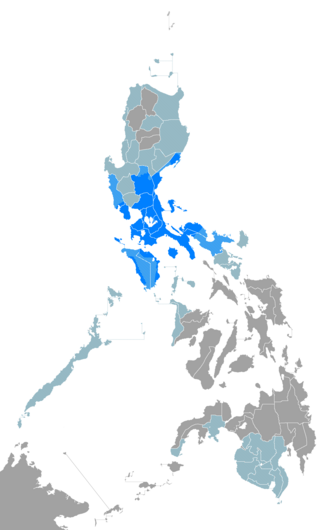
Tagalog is an Austronesian language spoken as a first language by the ethnic Tagalog people, who make up a quarter of the population of the Philippines, and as a second language by the majority. Its standardized form, officially named Filipino, is the national language of the Philippines, and is one of two official languages, alongside English.

The Katipunan, officially the Kataastaasan Kagalang-galang na Katipunan ng mga Anak ng Bayan and abbreviated as the KKK, was a revolutionary organization founded in 1892 by a group of Filipino nationalists Deodato Arellano, Andrés Bonifacio, Valentin Diaz, Ladislao Diwa, José Dizon, and Teodoro Plata. Its primary objective was achieving independence from the Spanish Empire through an armed revolution. It was formed as a secret society before its eventual discovery by Spanish authorities in August 1896. This discovery led to the start of the Philippine Revolution.
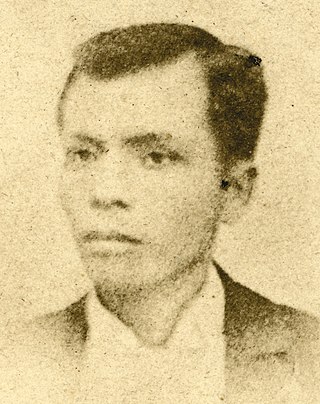
Andrés Bonifacio y de Castro was a Filipino revolutionary leader. He is often called "The Father of the Philippine Revolution", and considered one of the national heroes of the Philippines.
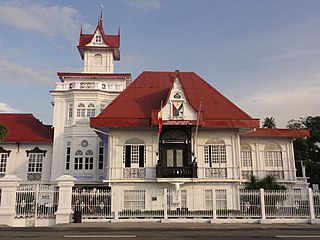
Cavite, officially the Province of Cavite, is a province in the Philippines located in the Calabarzon region in Luzon. Located on the southern shores of Manila Bay and southwest of Manila, it is one of the most industrialized and fastest-growing provinces in the Philippines. As of 2020, it has a population of 4,344,829, making it the most populated province in the country if the independent cities of Cebu are excluded from Cebu's population figure.

Batangas, officially the Province of Batangas, is a first class province of the Philippines located in the southwestern part of Luzon in the Calabarzon region. Its capital is the city of Batangas, and is bordered by the provinces of Cavite and Laguna to the north, and Quezon to the east. Across the Verde Island Passages to the south is the island of Mindoro and to the west lies the South China Sea. Poetically, Batangas is often referred to by its ancient name, Kumintáng.

Tagaytay, officially the City of Tagaytay, is a 2nd class component city in the province of Cavite, Philippines. According to the 2020 census, it has a population of 85,330 people.

Indang, officially the Municipality of Indang, is a 1st class municipality in the province of Cavite, Philippines. According to the 2020 census, it has a population of 68,699 people.
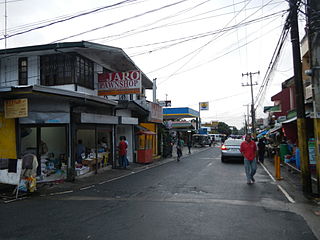
Alfonso, officially the Municipality of Alfonso, is a 1st class municipality in the province of Cavite, Philippines. According to the 2020 census, it has a population of 59,306 people.
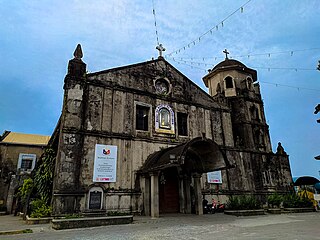
Silang, officially the Municipality of Silang, formerly known as Silan during the Spanish colonial era, is a 1st class urban municipality in the province of Cavite, Philippines. According to the 2020 census, it has a population of 295,644 people.

Balayan, officially the Municipality of Balayan, is a 1st class municipality in the province of Batangas, Philippines. According to the 2020 census, it has a population of 95,913 people.
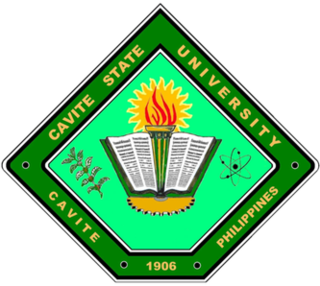
Cavite State University is a public university in the province of Cavite in the Philippines. Its 70-hectare (170-acre) main campus, known as the Don Severino delas Alas Campus, is located in the Municipality of Indang, Cavite about 60 km (37 mi) southwest of Manila. The educational institution has twelve other campuses spread all over the province.

The Diocese of Imus is a Roman Catholic diocese in the Philippines that comprises the entire province of Cavite. The diocese was canonically erected on November 25, 1961, when it was excised from the Archdiocese of Manila. Imus Cathedral, located along General Castañeda Street in the poblacion of Imus, serves as the see of the diocese. It is one of twelve cathedrals founded by the Order of Augustinian Recollects in the Philippines.

Batangas Tagalog is a dialect of the Tagalog language spoken primarily in the province of Batangas and in portions of Cavite, Quezon, Laguna and on the island of Mindoro. It is characterized by a strong accent and a vocabulary and grammar closely related to Old Tagalog.

The Magdiwang was a faction of the Katipunan, a Philippine revolutionary organization founded by Filipino rebels in Manila in 1892 with the aim to gain independence from Spain. The Magdiwang Council was acknowledged as "the supreme organ responsible for the successful campaigns against the enemy" within Cavite.
Juan Abad was a Filipino printer, playwright, and journalist-1899. His main contribution to Filipino theatre was his patriotic plays: the zarzuela Ang Tanikalang Guinto, and Isang Punglo ng Kaaway, the former which, caused his arrest and trial. Some authors credit Abad with the introduction of symbolism to Tagalog drama, a claim which is still to be proven; although he may have been one of the first Tagalog dramatists to use symbolism in their plays.
Efren Reyes Abueg is a well-known and recognized Filipino-language creative writer, editor, author, novelist, short story writer, essayist, fictionist, professor, textbook writer, and anthologist in the Philippines. His works appeared on magazines such as Liwayway, Bulaklak, Tagumpay, Mod, and Homelife.
Kundiman is a genre of traditional Filipino love songs. The lyrics of the kundiman are written in Tagalog. The melody is characterized by a smooth, flowing and gentle rhythm with dramatic intervals. Kundiman was the traditional means of serenade in the Philippines.

Protests against Former President Rodrigo Duterte escalated on November 18, 2016, following Duterte's support of the burial of the late president Ferdinand Marcos. These series of protests are mostly conducted by progressive groups and other opposing figures mainly due to the ongoing war on drugs, the declaration of martial law in Mindanao, and employment issues such as contractual terms being applied by companies and inflation which occurred due to the passage of the Tax Reform for Acceleration and Inclusion Law. Other causes of the protests include the government's response to the COVID-19 pandemic in the country, the passage of the Anti-Terrorism Act of 2020, and the shutdown and franchise denial of ABS-CBN.

The Tagaytay–Nasugbu Highway, alternatively known as Tagaytay–Nasugbu Road and formerly as Tagaytay–Tuy–Nasugbu Port Road, is a 43.86-kilometer (27.25 mi), two-to-four lane, secondary highway in the provinces of Cavite and Batangas, Philippines, that connects the city of Tagaytay in Cavite and the municipality of Nasugbu in Batangas.
Malvar: Tuloy ang Laban is an upcoming Filipino biographical war film directed by Jose "Kaka" Balagtas and written by Ed Samson. It will depict the life of Miguel Malvar, one of the last Filipino generals to surrender in the Philippine–American War. The film will star Manny Pacquiao as the titular General Malvar, with Isko Moreno as Andrés Bonifacio and E.R. Ejercito as Emilio Aguinaldo.

















